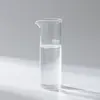+86-15212299029
- All
- Product Name
- Product Keyword
- Product Model
- Product Summary
- Product Description
- Multi Field Search
Views: 220 Author: tcchems Publish Time: 2025-11-06 Origin: Site











Content Menu
● What is Phosphate Buffered Saline?
● Preparing Phosphate Buffered Saline
>>> Step 1: Measure the Components
>>> Step 2: Dissolve in Distilled Water
>>> Step 4: Make Up the Volume
● Applications of Phosphate Buffered Saline
>> 1. What is the pH range for PBS?
>> 2. Can PBS be used for all cell types?
>> 3. How long can PBS be stored?
>> 4. Is it necessary to autoclave PBS?
>> 5. Can I prepare PBS without potassium salts?
Phosphate Buffered Saline (PBS) is a widely used buffer solution in biological research and clinical applications. It is essential for maintaining the pH and osmolarity of biological samples, making it a critical component in various laboratory procedures. This article will guide you through the preparation of PBS, its components, applications, and some frequently asked questions.

PBS is an isotonic buffer solution that mimics the ion concentrations and osmolarity of the human body. It typically contains sodium chloride, sodium phosphate, potassium chloride, and potassium phosphate. The primary purpose of PBS is to maintain a stable pH environment, which is crucial for biological reactions and processes.
1. Sodium Chloride (NaCl): Provides the necessary ionic strength and helps maintain osmotic balance.
2. Potassium Chloride (KCl): Contributes to the ionic strength and is essential for various cellular functions.
3. Sodium Phosphate Dibasic (Na2HPO4): Acts as a buffering agent to maintain the pH of the solution.
4. Potassium Phosphate Monobasic (KH2PO4): Works in conjunction with sodium phosphate to stabilize the pH.
- Distilled Water: 800 mL
- Sodium Chloride (NaCl): 8 g
- Potassium Chloride (KCl): 0.2 g
- Sodium Phosphate Dibasic (Na2HPO4): 1.44 g
- Potassium Phosphate Monobasic (KH2PO4): 0.24 g
- pH Meter: For adjusting the pH
- Magnetic Stirrer: For mixing the solution
- Autoclave or Filtration System: For sterilization
Using a balance, accurately weigh the following components:
- 8 g of Sodium Chloride (NaCl)
- 0.2 g of Potassium Chloride (KCl)
- 1.44 g of Sodium Phosphate Dibasic (Na2HPO4)
- 0.24 g of Potassium Phosphate Monobasic (KH2PO4)
1. In a clean beaker, add 800 mL of distilled water.
2. Gradually add the weighed salts to the water while stirring with a magnetic stirrer. Ensure that each component is fully dissolved before adding the next.
1. After all components are dissolved, use a pH meter to measure the pH of the solution.
2. The target pH for PBS is typically around 7.4. If the pH is too low, add a small amount of sodium hydroxide (NaOH) to raise it. If it is too high, add hydrochloric acid (HCl) to lower it.
3. Stir the solution continuously while adjusting the pH.
Once the pH is adjusted, add distilled water to bring the total volume of the solution to 1 liter. This ensures that the concentrations of the components are correct.
To ensure that the PBS is free from contaminants, sterilize the solution. This can be done by:
- Autoclaving: Place the PBS solution in an autoclave-safe container and autoclave at 121°C for 15-20 minutes.
- Filtration: Alternatively, filter the solution through a 0.22 µm filter to remove any microbial contaminants.
Store the prepared PBS in sterile containers at 4°C for short-term use. For long-term storage, it can be frozen, but it is advisable to prepare fresh PBS for critical applications.
PBS is used in various applications, including:
- Cell Culture: It is commonly used to wash cells and tissues, providing an isotonic environment that prevents cell lysis.
- Dilution of Samples: PBS is often used to dilute biological samples for assays and experiments.
- Rinsing: It is used to rinse laboratory equipment and cell culture vessels to remove residual media or contaminants.
- Transport Medium: PBS can serve as a transport medium for biological samples, maintaining their viability during transport.
The typical pH range for PBS is between 7.2 and 7.4, which is optimal for most biological applications.
While PBS is suitable for many cell types, some specific applications may require specialized buffers. Always check the requirements for your specific cell type.
PBS can be stored at 4°C for several weeks. For longer storage, freezing is recommended, but it is best to prepare fresh PBS for critical experiments.
Autoclaving is recommended to ensure sterility, especially if the PBS will be used for cell culture or sensitive biological applications. If not autoclaved, ensure that the solution is filtered.
Yes, some formulations of PBS do not include potassium salts, especially if the buffer is used for fixed tissues or certain assays. Adjust the recipe according to your specific needs.

Preparing Phosphate Buffered Saline is a straightforward process that requires careful measurement and pH adjustment. This buffer is essential in many biological applications, providing a stable environment for cells and tissues. By following the steps outlined in this article, you can prepare PBS effectively for your laboratory needs.
Hot Tags: China, Global, OEM, private label, manufacturers, factory, suppliers, manufacturing company



